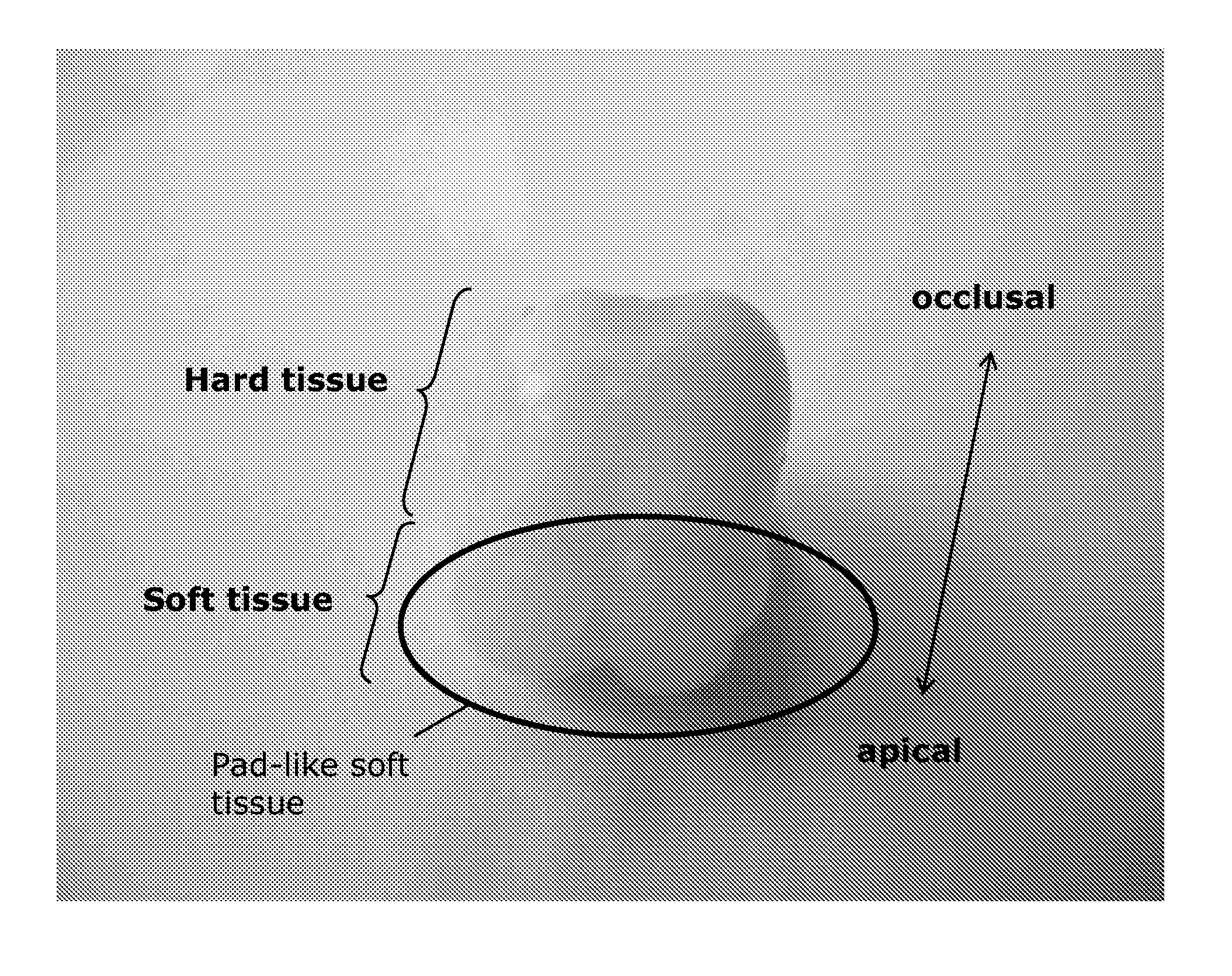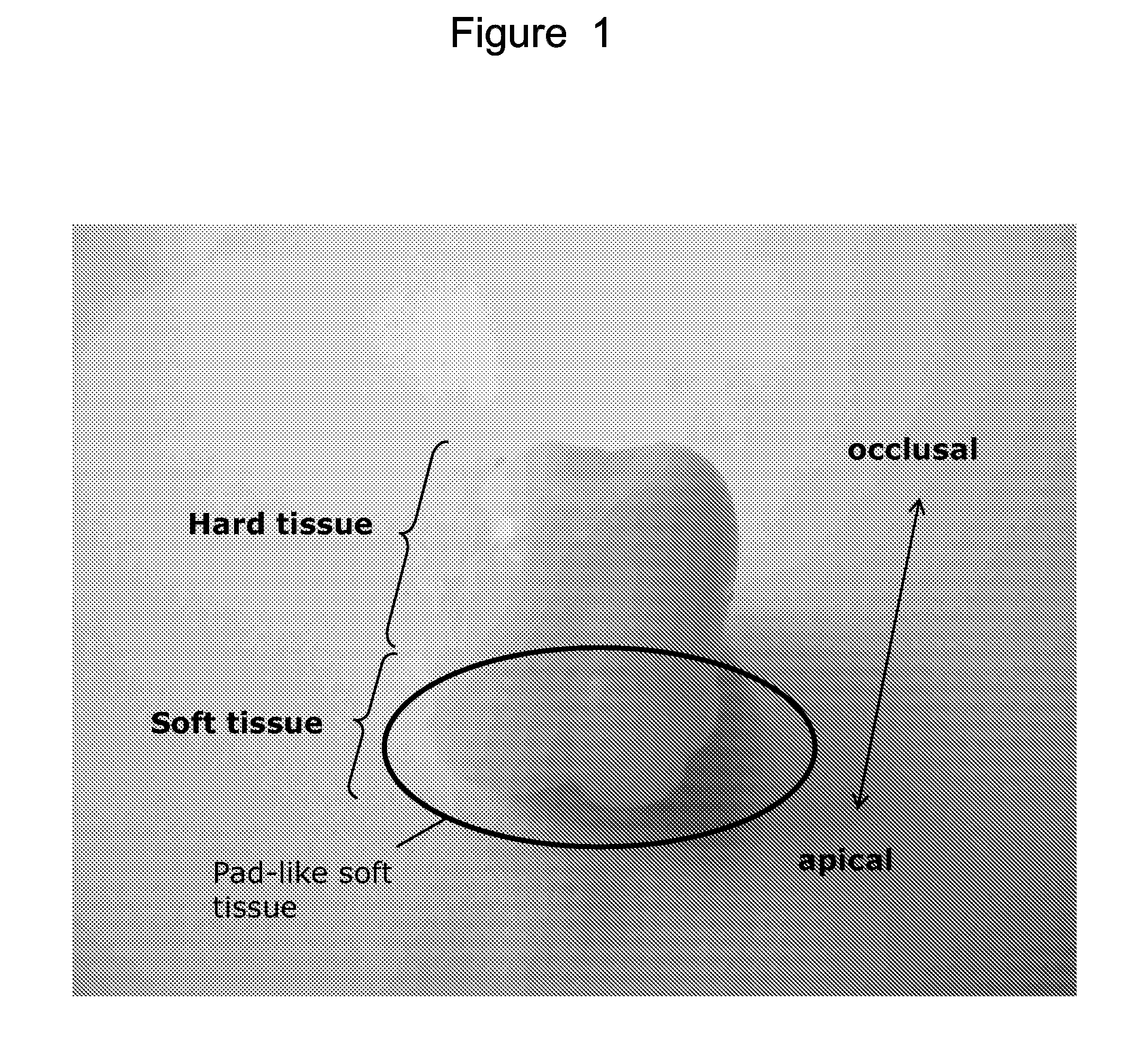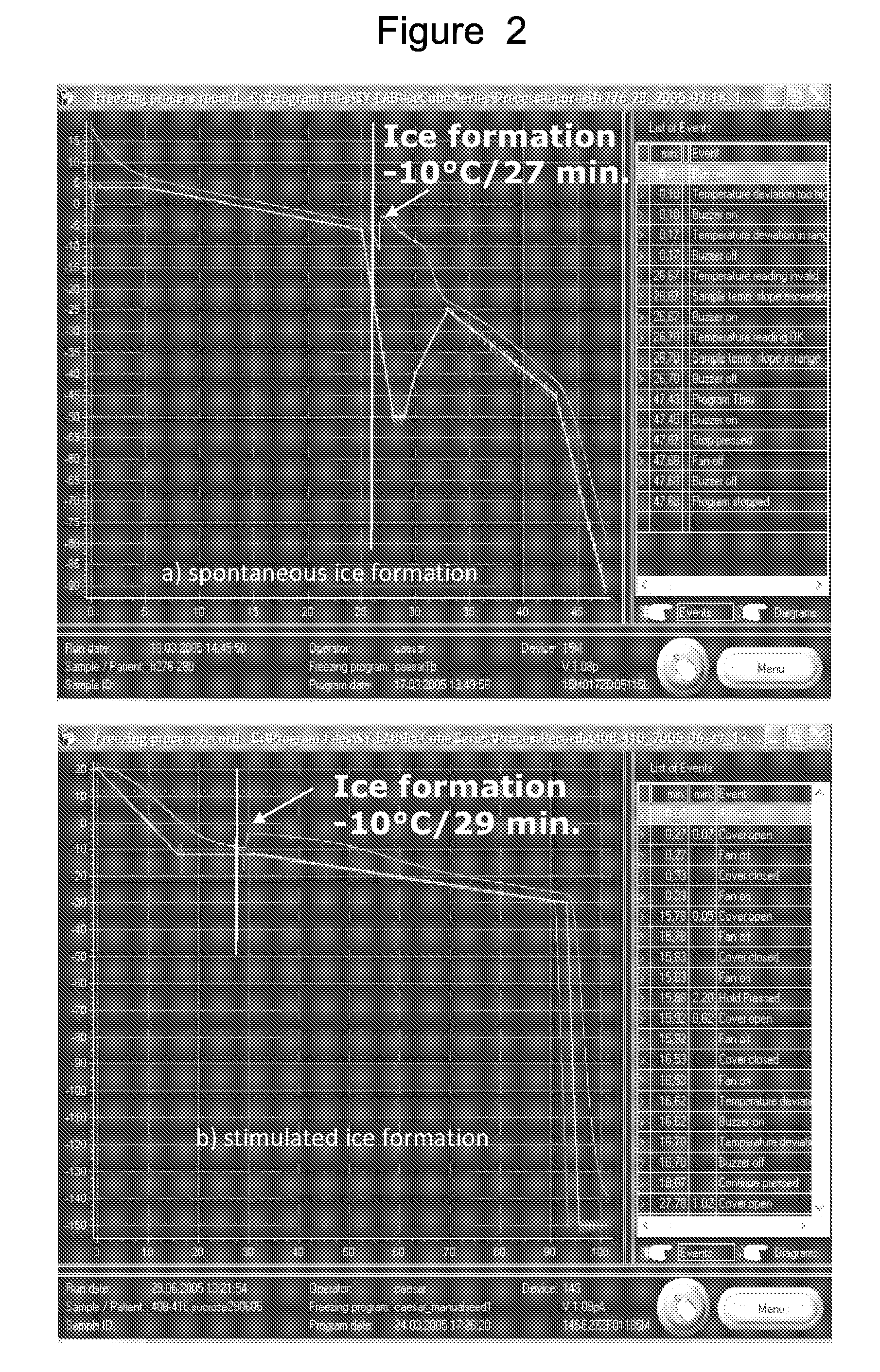Method forisolating stem cells from cryopreserved dental tissue
- Summary
- Abstract
- Description
- Claims
- Application Information
AI Technical Summary
Benefits of technology
Problems solved by technology
Method used
Image
Examples
Embodiment Construction
[0031]FIG. 1 shows an extracted wisdom tooth having a pad-like soft tissue on its apical side, that is placed as a dental tissue compartment to be frozen in a freezing medium (cryoprotective medium, a mixture of medium, 10% FCS and 10% DMSO or a mixture of PBS, serum albumin, sucrose and PrOH) and then is frozen under controlled conditions in an automatic freezer (IceCube) under set freezing parameters (cooling rate). The frozen samples are stored for longer periods of time at −196° C. (above liquid nitrogen). Thawing of the tissue at 37° C. is also critical and is performed either rapidly or slowly with incremental replacement of the cryoprotective medium with a normal medium (freezing medium containing 50%, 25%, 12.5%, 6.25% and 0% FCS). After thawing, the tissue is digested with collagenase / dispase by analogy with the fresh tissue. The isolated cells are cultured at 37° C. in DMEM+10% FCS and evaluated according to parameters such as vitality, proliferation ability, expression of...
PUM
 Login to View More
Login to View More Abstract
Description
Claims
Application Information
 Login to View More
Login to View More - R&D
- Intellectual Property
- Life Sciences
- Materials
- Tech Scout
- Unparalleled Data Quality
- Higher Quality Content
- 60% Fewer Hallucinations
Browse by: Latest US Patents, China's latest patents, Technical Efficacy Thesaurus, Application Domain, Technology Topic, Popular Technical Reports.
© 2025 PatSnap. All rights reserved.Legal|Privacy policy|Modern Slavery Act Transparency Statement|Sitemap|About US| Contact US: help@patsnap.com



